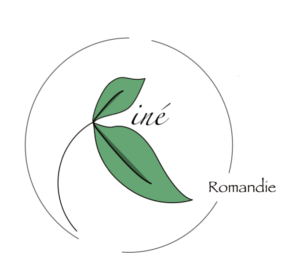Looking at animals, and looking at people looking differently at animals
After the pandas in Chengdu I went back and re-read Berger’s “why look at animals” (pdf) – I had linked to it after all and thought I had better make sure I wasn’t posting complete codswallop. It turned out to be quite timely. In the south of Yunnan, as we finally got away from mega-cities, in both Yuanyang and in XIshuangbanna, we found ourselves looking at people that look at animals very differently to the way we do.
In both places the local villagers live cheek-by-jowl with beasts that are part of their daily life, above all providing food. In both places chickens were everywhere, roaming the village, often with chicks in tow, the cockerels crowing from VERY early in the morning. We stayed one night in a house in a village in the rubber plantations near the border with Myanmar. Here the houses are on stilts with the animals underneath – including the chickens that roost on the beams right beneath our matresses. BANG BANG BANG as they flap their wings against the floor (or jump up and down we will never know) and then COCK-A-DOODLE-DOO up close and personal (and definitely not “cocorico” as the francophones would have it). All starting at some ungodly hour. In Yuanyang oxen are still central to ploughing the rice paddies (I can’t tell you if they are really are oxen or something similar, as Robert MacFarlane points out as we become alienated from non-human nature we are losing our words for it). It was quite a shock to see a guy knee deep in mud and water, driving what I assume were a mother and calf to turn the earth in his paddy. Ten minutes later as we hiked in the paddies an older guy brought two oxen down to graze further down the mountainside.
Even the houses are built to house the family and their animals. In Yuanyang traditionally a “mushroom” shape, now mostly replaced by a cube, the animals at ground level, the humans next, the drying / stored crop on the top floor. In much warmer Xishabanna, a larger flatter home on stilts with pigs and chickens underneath. Bees in boxes on the joists.
Of course this means a different relation to meat. In Xishabanna we heard that there’s less meat in the villagers diet than a few years ago, swine fever being just one factor. In stark contrast we see piles of food and an abundance of meat in the cities – here at least it feels hard to spot the end of the era of cheap food that I have been reading about in the excellent (if long) Capitalism in the web of life. We are very flexible flexitarians these days. The pigs that live under the house all year in the Xishabanna village are slaughtered for the family and friends for new year. In a market on the way to a trek we see dog meat for sale.
Berger talks about exchanging looks with animals. Clearly the pandas dont even see us. As he points out, in their sterilised environment the only thing left to provide stimulation to captive animals is the keeper bringing food or a chance to mate. The humans beyond on the fence simply don’t register. So we watch them without them returning our stare – and we watch each other watching them, who else are the panda head bands for? But now in the country we find we are “looking at people” that look at animals differently than the way we do (I dont know how they receive their animals gaze). We cant help but feel a bit uncomfortable at the voyerism of watching people with this other relation to animals, and for that matter to crops. They live in many ways similar to our grandparents, but more likely our great and great, great grandparents (different in Valais, London, or the valleys of South Wales).
And we have the feeling these ‘country folk’ don’t return our gaze too much. There is a distinct difference to the non-verbal communication we enjoy with city dwellers (non-verbal plus “hello”, and less often “what is your name”, “pleased to meet you” and other half remembered scraps from school). In the city we exchange knowing glances and grins – I see you watching me watching you watching me.. a good game in which both are complicit. In the country we are usually basically ignored: nihao gets no response, smiles rarely a reaction. It’s hard to escape the conclusion that we are pretty irrelevant to these villagers, with long and physical days, lived to a different beat, working the rice paddies or the rubber plantations and the tea bushes. Not entirely different to our irrelevance to the pandas beyond the fences and moats.
Perhaps the biggest difference between 2019 and anything more than 10 years ago though is of course the mobile phone. As good tourists we snap and occasionally video. And we pretty often get photographed and videoed ourselves (less so in the south it seems to me and not by the villagers I think). And while we go earnestly about, respectfully valuing difference etc etc etc, the kick is how they are looking at us. Aram has spotted, more than once, locals, even in remote small towns, filming us with silly filters on. On the way into the jungle we stopped at a small town market and walked around looking at the eels, ducks, chickens, vegies and, for us other “exotic” stuff, for sale. Amongst the stalls and produce spread on mats, some shy smiles, and a lady filming us with her phone. Aram turned and saw the filter: me with enormous green hair, huge red ear-rings, fully kohl’ed up eyes, and exaggerated red lips. Looking at animals indeed. 🙂

























